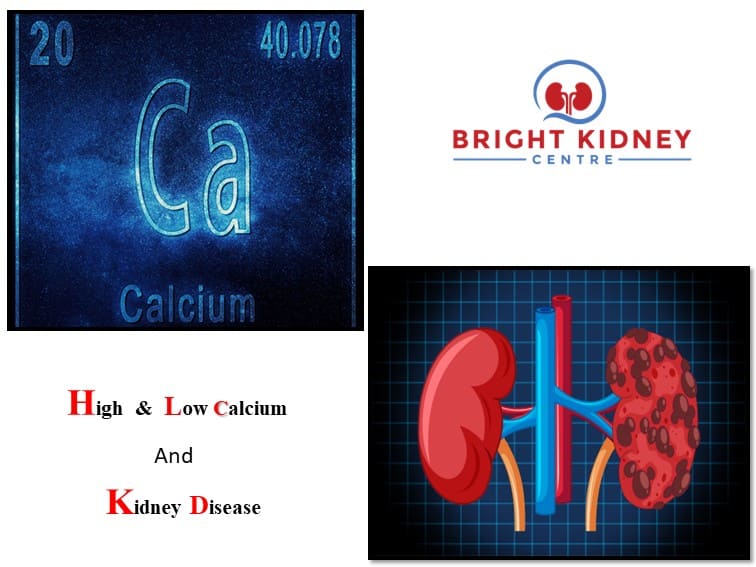Calcium is the most common and vital mineral in the body. It is mostly stored in the bones. Calcium is also present in the blood. Apart from making the bones strong, calcium helps in the proper functioning of nerves, the nervous system, muscles, and the heart. It also helps in clotting the blood when you bleed.
Parathyroid and calcitonin hormones control the levels of calcium in the bones and blood. Vitamin D helps in the absorption of calcium from the food you eat and maintains calcium levels in the body.
When you have excess calcium (higher than normal levels) in your body, it is known as hypercalcemia.
High and low calcium levels and Kidney Disease
Causes of hypercalcemia
Hyperparathyroidism and certain types of cancers may cause this condition. The use of certain medications can also increase the levels of calcium in the blood (hypercalcemia). Excess use of vitamin D, vitamin A, and calcium supplements can also lead to hypercalcemia.
Is hypercalcemia life-threatening?
Many people with excess calcium don’t have any symptoms. Doctors diagnose this condition through routine blood tests. However, severe hypercalcemia can lead to serious health issues such as abnormal heart rhythms (arrhythmia), kidney failure, and confusion. Excess calcium damages renal tubules reduces the filtering ability of kidneys, and leads to renal failure. Excess calcium from blood builds up in the kidney tissues (nephrocalcinosis). Over time, it can lead to renal failure.
Hypercalcemia also increases the risk of kidney stone formation. They block urine flow in the kidneys and increase the risk of infection and kidney damage.
What are the symptoms of hypercalcemia?
Hypercalcemia in its early stage does not cause any symptoms. However, severe or long-term hypercalcemia can cause headaches, bone pain, fatigue, frequent urination and thirst, constipation, muscle cramping, weakness, irritability, decreased appetite, nausea, and vomiting.
Low Calcium Levels (Hypocalcemia)
Serum calcium levels can go low when you don’t get enough calcium through diet. When this happens your bones, muscles, and kidneys become weak.
Healthy kidneys convert vitamin D into its active form. Active vitamin D helps in the absorption of calcium from the food you eat. When you have kidney disease you will have low levels of active vitamin D and low blood calcium levels. People with low calcium levels reach kidney failure faster than those with normal calcium levels.
Low calcium levels – a risk factor for kidney failure
Many studies show that CKD patients with low calcium levels reach kidney failure faster compared to those patients with normal calcium levels. In CKD patients, vitamin D levels are low – and therefore, calcium levels are low. Low calcium levels indicate low vitamin D levels and thus worsening kidney function – which is heading toward kidney failure.
Symptoms of low calcium levels
- Muscle aches
- Fatigue
- Osteopenia (low bone density)
- Muscle cramps and spasms
- Tingling and numbness in the hands, arms & legs
- Lightheadedness or dizziness
How will you keep your calcium levels normal?
A dietician will work with you to help plan a diet that serves your calcium and vitamin D needs. Some foods are rich in calcium as well as phosphorus – which is not good with CKD patients. Phosphorus-rich foods are usually restricted in CKD patients. Talk to your dietician about a healthy alternative to high-phosphorus foods.
Read more – Diet for Chronic Kidney Disease patients
Bottom Line
Remember! you are at risk of kidney disease due to diabetes or high blood pressure. Therefore, if you have these health issues with either high or low serum calcium and vitamin D levels, you should see a nephrologist immediately.
An experienced nephrologist may order urine, blood, and imaging tests to know the cause of your symptoms and diagnose the condition. It will help the doctor to develop an apt treatment plan. Still, if you have any more concerns regarding high and low calcium levels and kidney disease, then visit Bright Kidney Centre for apt diagnosis and treatment.

Leave a Reply